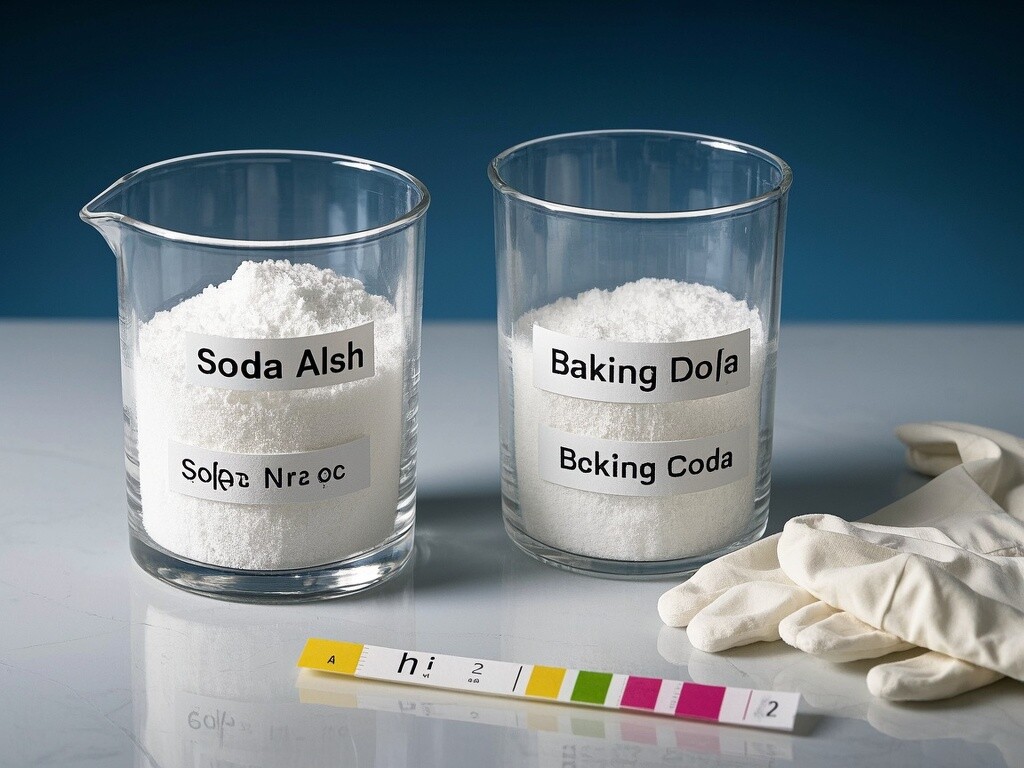News

Chemical Composition and Properties
Soda ash, chemically known as sodium carbonate (Na₂CO₃), is a white, odorless powder with a high alkalinity (pH ~11). It is hygroscopic and dissolves readily in water, releasing heat. Baking soda, or sodium bicarbonate (NaHCO₃), has a milder alkalinity (pH ~8.4) and decomposes at temperatures above 50°C, releasing carbon dioxide. While both are sodium salts, soda ash is more corrosive and used in heavy-duty applications, whereas baking soda is safer for domestic use.
Industrial Applications
Soda ash is a cornerstone in glass manufacturing, accounting for 50% of global consumption. It lowers the melting point of silica, reducing energy costs. Other uses include pulp/paper production, water treatment, and detergent formulations. Baking soda, meanwhile, is pivotal in food processing (leavening agent), pharmaceuticals (antacid), and fire extinguishers. For specialized chemical needs, consider Dimethylformamide (DMF), a versatile solvent in adhesives and synthetic fibers.
Cost and Availability
Soda ash is typically cheaper in bulk ($200–$300/ton) due to large-scale production via the Solvay process. Baking soda costs more ($500–$700/ton) but requires smaller quantities for effectiveness. Procurement strategies should align with volume and application intensity.
Safety and Handling
Soda ash requires PPE (gloves, goggles) due to its corrosive nature, while baking soda is generally GRAS (Generally Recognized as Safe) by the FDA. Storage conditions also differ: soda ash must be kept dry to prevent caking, whereas baking soda is stable under ambient conditions.
Environmental Impact
Both chemicals are biodegradable but differ in ecological footprint. Soda ash production emits CO₂, but it is non-toxic to aquatic life. Baking soda is eco-friendly, often used in green cleaning products.
Regulatory Standards
Soda ash complies with ASTM E1073 for industrial grades, while baking soda meets USP/FCC standards for food and pharmaceutical use. Compliance ensures safety and performance in target applications.
Common Misconceptions
Many assume these compounds are interchangeable, but substituting soda ash for baking soda in recipes can cause toxicity. Conversely, baking soda lacks the strength for industrial pH adjustment.
Future Trends
The soda ash market is projected to grow at 3.5% CAGR (2023–2030), driven by glass demand in construction. Baking soda demand rises with eco-conscious consumerism, especially in cleaning products.
Why Choose Our Solutions?
We offer high-purity soda ash and tailored chemical solutions like Dimethylformamide (DMF) for diverse industries. Contact us for technical support and bulk procurement options.


